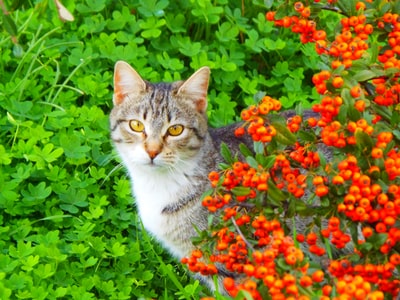The genotype is expressed through the phenotype.
- Alleles are alternative forms of the same gene.
- If both chromosomes in the same pair have the same allele for the gene they’re known as homozygous.
- If they have different alleles for the same gene they’re known as heterozygous.
- An allele can be either dominant or recessive. A dominant allele reveals itself more strongly than a recessive.
- A monohybrid cross allows you to work out the likelihood of allele pairs.
- If neither allele is dominant then this is known as co-dominance.
- A gene can have more than two alleles.
- Some genes are linked to the sex chromosomes.
- The Hardy-Weinberg principle demonstrates a hypothetical situation in which there’s no change in the frequency of the alleles. Using this hypothetical basis of stability it’s possible to measure real change.
- p2 + 2pq + q2 = 1
- Variation within species means that certain individuals are more adapted then others.
- The process in which a species adapts to its environment is called evolution.
- Differential reproductive success refers to how individuals with the best traits are most likely to survive and go on to reproduce.
- Directional selection is where selective pressures are put on a species.
- Stabilising section is where there’s no change to the environment and, therefore, no selective pressures.
- Disruptive selection is where a change in the environment creates selection pressures which are ideal for two extreme traits.
- Speciation is where one species forms two species.
- Geographical isolation is where a physical barrier divides a population.
- The populations evolve differently and are now reproductively isolated from each other.
——————————————————
TEST IT!
1.
a) Explain what the Hardy-Weinberg principle predicts.
b) The table below shows the frequency of alleles in the population of dogs in three cities.
|
City |
Allele frequency |
|||
|
Piebald |
Short-haired |
Harlequin |
Agouti |
|
|
London |
0.001 |
0.69 |
0.24 |
0.49 |
|
Berlin |
0.012 |
0.72 |
0.73 |
0.23 |
|
Madrid |
0.003 |
0.73 |
0.82 |
0.36 |
i. The piebald dogs are deaf. Would the principle hold true for piebald dogs? Explain your answer.
ii. What is the evidence from the table that short-haired and harlequin are alleles from different genes?
2.
A rabbit breeder crosses a black male rabbit with a black female rabbit. The resulting offspring is eight black rabbits and four white rabbits.
a) How can you tell that the white fur allele is recessive from the offspring produced?
b) B represents the allele for back fur and b the allele for white fur. If this black male rabbit bred with a white female what would be the likely ratio of black to white offspring? Draw a punnet square to show your working.
3.
An individual must be well-adapted to its environment in order to survive.
a) Describe what is meant by natural selection.
b) Leopards in a population begin to run faster. Antelopes, their prey, must run faster to escape. What form of natural selection is this?
c) A number of the leopards migrate and form a population in another region. What will happen to the gene pools of each group of leopard?
ANSWERS
1.
a) The frequency of alleles of a particular gene will stay constant from one generation to the next with no genetic change providing that there’s no mutation, no natural selection, no genetic isolation, no random mating and no migration.
b)
i. Deaf dogs are less likely to survive and pass on their genes. This will reduce the frequency of this allele.
ii. The Berlin and Madrid allele frequencies add up to more than 1.
2.
a) Both parent rabbits carry the gene for white fur as they’ve produced white offspring but neither of them had white fur.
b)
| b | b | |
| B | Bb | BB |
| b | bb | bb |
50:50 or 1:1
3.
a) Variation within species means that certain individuals are more adapted then others. Those that are less adapted are less likely to survive and reproduce therefore they don’t pass on their genes.
b) Directional selection
The leopards will evolve differently because they’ll have different selection pressures to contend with. If the environments are similar speciation can still occur due to random genetic drift. Changes in the allele frequencies will occur in both populations causing a difference in the gene pools
 The genotype is expressed through the phenotype.
The genotype is expressed through the phenotype.